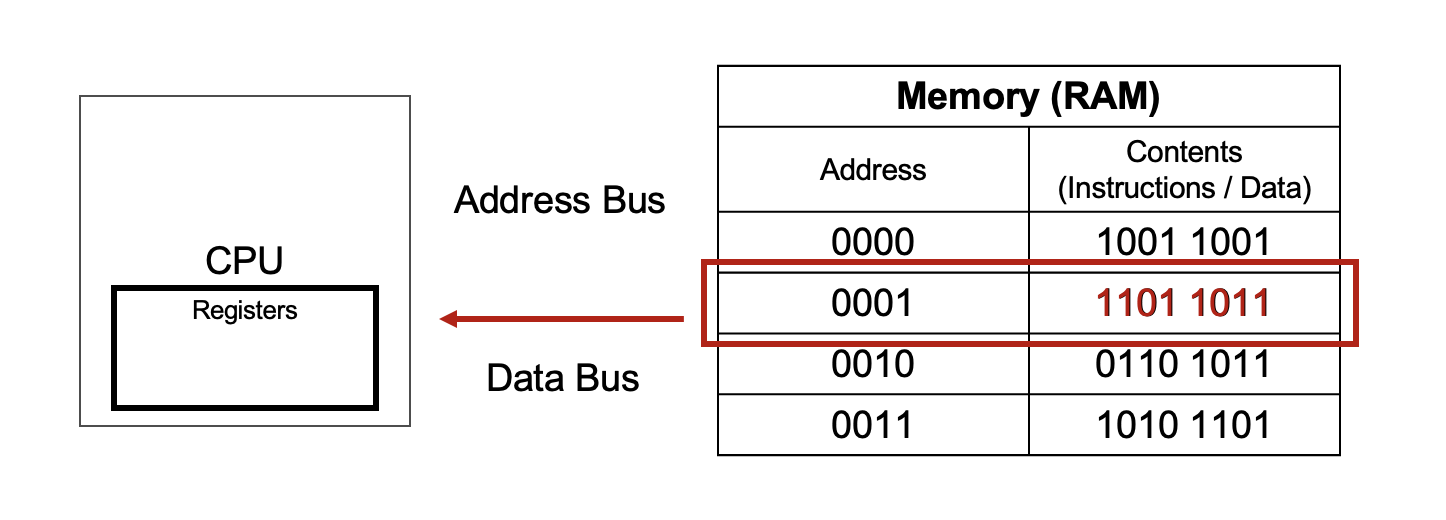The Fetch Decode Execute Cycle
The Fetch Decode Execute Cycle is the only thing that a CPU can do. This process begins as soon as a computer is switched on and will only end when it is turned off.
Each step in the Fetch Decode Execute cycle makes use of different parts of a CPU and different busses.
Fetch
All the data and the instructions the CPU needs is stored in Memory (which is outside of the CPU). All the data and instructions have their own unique address for the “memory location” they are in.
When the CPU needs data or instructions it requests them using the address of their memory location. The CPU places the memory location address on the Address Bus.
The data or instruction at the memory location address requested by the CPU is sent back to the CPU using the Data Bus. The data or instruction requested is now stored in registers within the CPU.

Decode
The Control Unit inside the CPU figures out what to do with the instructions that has been fetched from memory.

Every CPU has an Instruction Set: A list of every instruction it can carry out. Each instruction has a unique binary number
Execute
The execute stage is where the instruction is carried out. This could be many things: It could be for the ALU to carry out a calculation, to fetch data, fetch another instruction at another memory location, or even to store data in memory.

Once the execute stage has been completed the cycle starts again.
